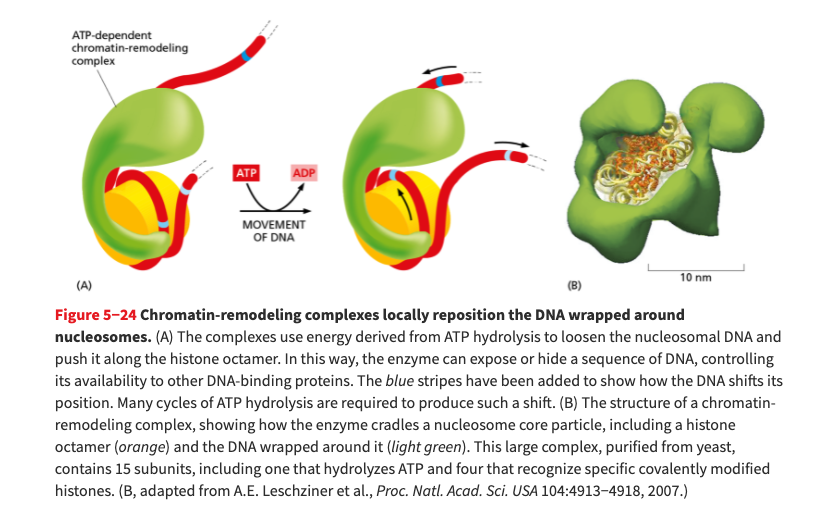Facts from ECB CH5: DNA and Chromosomes
| 217 wordsThe Structure of Eukaryotic Chromosomes
- human cells contain 2 meters of DNA
- the human cell nucleus is only 5–8 μm in diameter
- packaging of DNA is accomplished with specialized proteins that bind and fold. This generates a series of coils and loops that provide high levels of organization
- bacteria have genes in a circular DNA molecule
- The full set of human chromosomes contain 3.2 x 10^9 base pairs
- chromosomes can be identified with dyes that bind to A-T pairs versus G-C pairs, which produce predictable bands.
The Regulation of Chromosome Structure
-
cells can alter chromatin structure to expose localized regions of DNA, which allows access to specific proteins.
- ATP-dependent chromatic-remodeling complexes use ATP hydrolysis to change the position of DNA wrapped around nucleosomes
- Histones, which control how DNA is wrapped, can also be modified by enzymes
- Most cells only express about half the genes they contain
- Having two expressive X-chromosomes is lethal, so early in embryonic development one of them gets condensed into heterochromatin. Different X chromosomes sometimes have different expressions, e.g. in calico cats
- When a cell divides, it can pass on histone modifications, chromatin structure, etc. This “cell memory” is critical for the establishment and maintenance of different cell types
